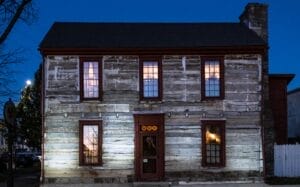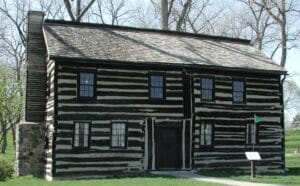While researching some ancestors, I learned that they owned a still and tavern on the Midwest frontier. One might assume that it was no coincidence that they were also ranking officers in the local militia, as militia elections were decided by popular vote.
This discovery prompted some research concerning alcohol consumption of yesteryear. I did some online research via several sites. The Temperance Guide I have included within this post was first published in 1784 by by none other than Dr. Benjamin Rush, in an article called “An Inquiry into the Effects of Spirituous Liquors on the Human Body and the Mind”.

Colonial Americans drank roughly three times as much alcohol as modern-day Americans. By 1790, most Americans consumed an about six gallons of pure alcohol a year.
Reasons for the high consumption rate included: poor or polluted water supplies, a belief in alcohol’s nourishing and medicinal properties, and generally, a mindset from our English ancestors that water was bad for a person’s health. Considering the sanitary conditions of the day, this was likely accurate. Beer consumption was seen as a healthy substitute for water.
In the early 1800’s, many people believed it was healthier to drink lukewarm alcohol during hot weather rather than drink cold water. Signs were sometimes displayed at public wells warning individuals of the dangers of cold water during the summer. Settlers believed that when a person sweated, heat was conducted from the inside of the body, and so the stomach needed warmth. Warmth could be created by consuming by alcohol.
Small beer, (typically 1%) beer, was brewed for children, servants, and general family consumption. Small beer was also available at taverns because it allowed people to drink several glasses without becoming intoxicated. Small beer, by the barrel, cost half the price of a barrel of strong beer.
 Overfield Tavern Museum Troy, OH
Overfield Tavern Museum Troy, OH
The development of the Midwest “corn belt” created large new supplies of corn, which was cheaper and more profitable to convert into whiskey than it was to transport great distances without spoiling. Western farmers could make no profit shipping corn overland to eastern markets, so they distilled corn into liquid assets. By the 1820s, whiskey sold for twenty-five cents a gallon. It was cheaper than beer, wine, coffee, tea, or milk.
Taverns were the center of civic life. The first businesses established on the frontier were often simple taverns located along trails and roads to take care of the needs of travelers. A tradition of the time was that a drink be had at every halt in a journey.
Many colonial drink recipes can be found online… However, I urge you to take the Temperance Guide seriously.

Newcom Tavern Dayton, OH
There are many historic taverns that that are open to visitors. The Overfield Tavern in Troy, Ohio and the Newcom Tavern in Dayton, Ohio are two great examples of early taverns that still exist and are open to visitors.
Welcome to “Sharing the Stories of History with Tim Mann”!
Meet Timothy A. Mann, a passionate historian born and raised in the heart of Shelby County, Ohio where Tim’s roots run deep in the rich soil of American history. As the author of articles and books, including “Frontier Miscellany Concerning the Miami County Ohio Militia,” “Colonel John Mann, His Kith and Kin,” and “Frontier Militia – The War of 1812,” Tim’s literary contributions have enlightened and inspired countless history enthusiasts.
Join Tim Mann on a journey through time as he shares fascinating tales, untold stories, and hidden gems from the annals of history. Let’s delve into the past together and uncover the wonders that await in “Sharing the Stories of History with Tim Mann.”



